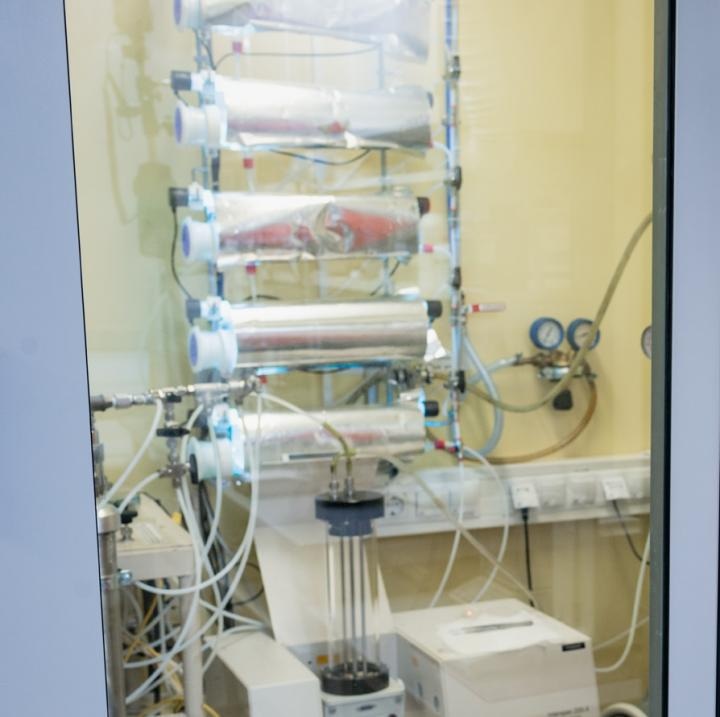Apr 24 2019
Little Estonia is always proud of its clean air. Clean air has been known, jokingly, as one of the most significant export things of Estonia. But unfortunately, the environment, including the atmosphere, in Estonia is becoming more and more contaminated.
 Air purifier. (Image credit: Sergei Preis, TalTech)
Air purifier. (Image credit: Sergei Preis, TalTech)
Researchers aimed to develop many air purification methods. In March 2019, the researchers at TalTech published an article titled “Acquisition of O2 adsorption isotherms as thorough characterization of nanocrystalline titanium dioxide photocatalysts” in the high-impact professional journal Surfaces and Interfaces.
Our indoor climate, i.e. air in the rooms we are staying in, is increasingly being polluted by volatile toxic substances from furniture and cleaning agents. The growing chemical-based production creates the need for more efficient air purifiers.
Sergei Preis, Professor, Department of Material and Environmental Technology, TalTech.
Sergei Preis is one of the coauthors of the aforementioned article.
The photocatalyst is the key component of air purifiers; its role is to detect and trap many harmful compounds in air in the rooms. To date, although there has been a firm opinion among the researchers that UV radiation plays an important role in photocatalysis, yet the presence of oxygen has been a secondary consideration.
At Tallinn University of Technology, photocatalysts of air purifiers have been studied over the last 20 years. What makes our research unique is its specific method. The photocatalysts developed so far have been characterized by adsorption of volatile organic substances. Adsorption is a process, in the course of which harmful molecules of gases adhere onto the surface of a solid substrate (adsorbent), where they are partially or fully oxidized and become harmless. This is how the photocatalytic method works: harmful molecules accumulate on the surface, where active oxidisers are produced (from oxygen in the air and light) that will ultimately destroy harmful molecules.
So far, no particular attention has been paid to oxygen adsorption; oxygen adsorption has been studied only under vacuum. We, however, conducted our analysis under normal conditions (not under vacuum). Such analysis has never been carried out before.
Sergei Preis, Professor, Department of Material and Environmental Technology, TalTech.
The test results show that, along with UV radiation, the presence of oxygen in the photocatalytic process has been greatly underestimated.
We can claim that the current method for characterization of photocatalytic materials is no longer up to date. When developing photocatalytic air purifiers, it is useful to determine the adsorption capacity of oxygen, which is a very important quality indicator in characterization of nanocrystalline photocatalysts, besides the analysis used so far.
Sergei Preis, Professor, Department of Material and Environmental Technology, TalTech.